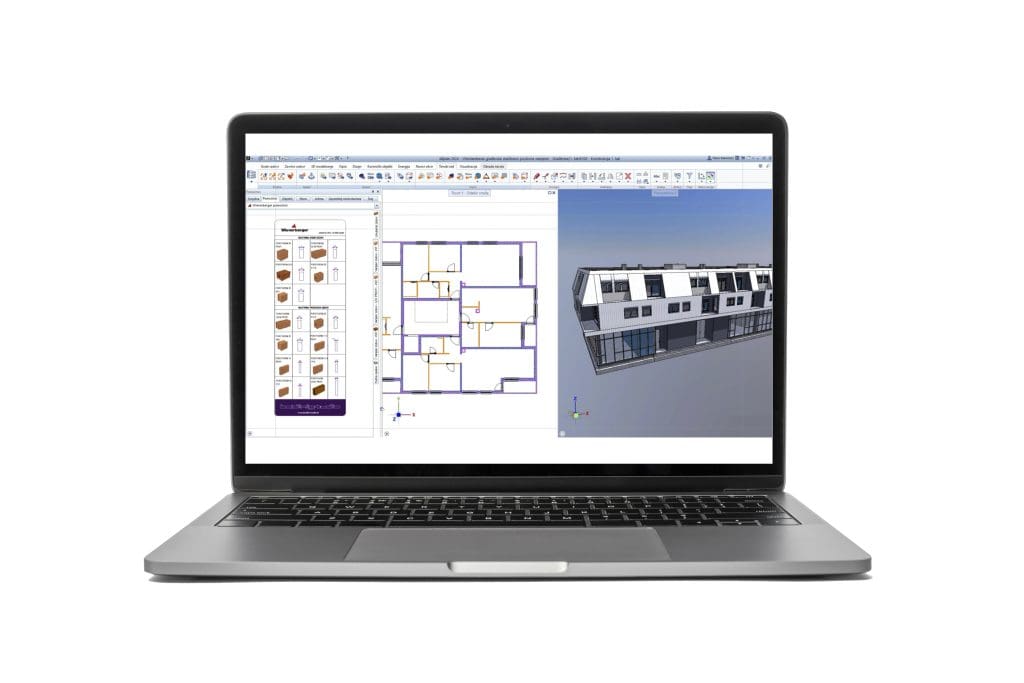A new mixed-use building demonstrates that innovation and local identity can coexist harmoniously. Through a fully digital, openBIM-based workflow, the project team delivered a modern retail space that blends seamlessly into its traditional surroundings
Complexity in a compact form
While the finished building looks understated, the design and construction process was anything but. The project team had to work within strict height limitations and carefully balance the massing to blend with its surroundings. At the same time, they needed a structurally optimised layout that could handle varying spans, complex load paths and retail-specific demands – all within a tight footprint.
To meet these challenges, Baldini Studio adopted a fully digital workflow from the outset. A BIM-centered approach enabled early synchronisation between architectural and structural models, reducing coordination issues later on. This digital-first strategy was especially important given the building’s unique layout and constrained site conditions.
openBIM and seamless data flow
True to the openBIM philosophy, the team tested two different routes for data exchange. One involved importing the architectural model directly into BIMPLUS, while the other passed through Allplan before being uploaded to the cloud. Both workflows ran smoothly, giving the team confidence that there would be no integration issues further down the line.
BIMPLUS proved especially valuable for tracking design iterations. Using the platform’s visual comparison tools, structural engineers could identify model changes at a glance, with colour-coded highlights making adjustments immediately clear. This streamlined communication, reduced meetings and helped avoid potential missteps during model handover.
AutoConverter also played a key role in bridging the gap between design and analysis. Instead of manually adjusting geometry or managing node alignment in SCIA Engineer, engineers followed a guided and automated process that simplified the transformation of the architectural model into an analytical one. With each step clearly defined, the conversion process became faster, more intuitive and significantly less error-prone.

Closing the loop: From analysis to reinforcement
Once the structural design was validated in SCIA Engineer, the team explored how to streamline the next stage – reinforcement. Rather than interpreting calculations manually, engineers generated reinforcement for beams and columns directly within SCIA Engineer, then transferred it into Allplan for detailing and documentation.
This approach delivered clear and measurable benefits. It reduced the time needed to model rebar layouts and lowered the risk of misinterpretation between analysis and drafting.
Instead of redrawing reinforcement from scratch, draftsmen could focus on refining automatically generated layouts, combining these bars with project-specific detailing and print preparation.
By feeding the reinforcement model back into the architectural environment, the team also gave architects greater visibility into how the structure interacted with their design.
The result was a fully integrated design loop – from concept to analysis, reinforcement and documentation – that minimised manual effort while maximising accuracy, efficiency and cross-discipline coordination.
*Please note that this is a commercial profile.

